42 Best Exercises for Core Muscles
Table of Contents
Introduction
Core-strength exercises strengthen the core muscles, including the abdominal muscles, back muscles as well as the muscles around the pelvis. Strong core muscles make it easier to do several physical activities.
The person can do core-strength exercises on the carpeted floor or even mat. Breathe freely as well as deeply during each core-strength exercise. Focus on tightening the transversus abdominis, the deepest abdominal muscle & the one you feel contracting when you cough.
Repeat each of these core-strength exercises about 5 to 10 times. As the core strength improves, build up to 10 to 15 repetitions. If the person has back problems, osteoporosis, or other health concerns, talk to the doctor before doing these core-strength exercises.
Abdominal crunch
Abdominal crunches are the classic core-strength exercise:
Lie on the back & place the feet on the wall so that the knees & hips are bent at 90-degree angles. Tighten the abdominal muscles.
Raise the head as well as shoulders off the ground. To avoid straining the neck, cross the arms on the chest rather than locking them behind the head. Hold for three deep breaths. Return to the embarking position and then repeat 10 times per session. Do three sessions per day.
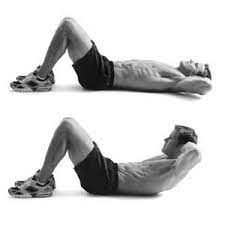
Bridge
To improve the core strength of several muscles in combination, try the bridge:
Lie on the back with the knees bent. Keep the back in the neutral position, not arched & not pressed into the ground. Avoid tilting the hips. Tighten the abdominal muscles.
Raise the hips off the ground until the hips are aligned with the knees and shoulders as well. Hold for three deep breaths.
Return to the beginning position and then repeat 10 times per session. Do three sessions per day.
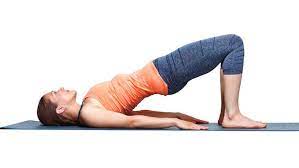
Single-leg abdominal press
A single-leg abdominal press is another popular core-strength exercise:
Lie on the back with the knees bent. Keep the back in the neutral position, not arched & not pressed into the ground. Avoid tilting the hips. Tighten the abdominal muscles.
Raise the right leg off the ground so that the knee, as well as hip, are bent at 90-degree angles. Rest a right hand on the top of the right knee.
Push the hand against the knee while using the abdominal muscles to pull the knee toward the hand. Keep the arm straight.
Double-leg abdominal press
When the patient is comfortable with a single-leg abdominal press, try the double-leg abdominal press for more core strength:
Lie on the back with the knees bent. Keep the back in the neutral position, not arched & not pressed into the ground. Avoid tilting the hips. Tighten the abdominal muscles.
Raise the legs off the ground, one at a time, so that the knees & hips are bent at 90-degree angles. Rest the hands on the top of the knees.
Push the hands against the knees while using the abdominal muscles to pull the knees toward the hands. Keep the arms straight. Hold for 3 deep breaths.
Return to the embarking position and repeat ten times per session. Do three sessions per day.

Segmental rotation
Segmental rotation is another way to boost core strength:
Lie on the back with the knees bent as well as the back in a neutral position. Tighten the abdominal muscles.
Keeping the shoulders on the ground, let the knees fall slowly to the left. Go only as long as is comfortable. The patient should feel the stretch, but not the pain. Hold for 3 deep breaths. Come back to the embarking position. Repeat the exercise to the right too.
Quadruped position
The core-strength exercise is called the quadruped:
Begin on the hands and knees as well. Place the hands directly below the shoulders, & align the head & neck with the back.
Tighten the abdominal muscles.
Raise the right arm off the ground & reach ahead. Hold for 3 deep breaths. Lower the right arm & repeat with the left arm.
Raise the right leg off the ground. Tighten the trunk muscles for balance. Hold for 3 deep breaths. Lower the right leg as well as repeat with the left leg.
For an added challenge, raise the left arm & the right leg at the same time. Repeat with the right arm and left leg as well.

Modified plank
The core-strength exercise is called a modified plank:
Lie on your stomach. Raise yourself up so that the patient rests on the forearms and the knees. Align the head as well as a neck with the back, & place the shoulders directly above the elbows. Tighten the abdominal muscles.
Create resistance by pressing the elbows as well as the knees toward one another. Neither should move from their positions on the ground.
Hold for 3 deep breaths.
Return to the embarking position and repeat ten times per session. Do three sessions per day.
Modified Plank variations
For more core-strength exercises, try these variations on a modified plank:
Lie on your stomach. Raise yourself up so that the patient is resting on the forearms as well as the knees. Align the head & neck with the back, & place the shoulders directly above the elbows. Tighten the abdominal muscles.
Raise the right arm off the ground. Hold for 3 deep breaths. Repeat with the left arm.
Raise the right leg off the ground. Hold for 3 deep breaths. Repeat with the left leg.
For an added challenge, raise the left arm & the right leg at the same time. Repeat with the right arm as well as the left leg.
Side plank
A side plank challenges stability & improves core strength by working the muscles along with the side of the body:
Lie on the left side, raising yourself onto the left forearm. Place the left shoulder directly above the left elbow, keeping the
shoulders, hips as well as knees in alignment. Rest the right arm along the side of the body.
Tighten the abdominal muscles. Hold for 3 deep breaths. Repeat on the right side.
For an added challenge, balance on the left hand. Raise the hips off the ground & extend the right hand toward the roof. Hold for 3 deep breaths. Repeat on the right side. Repeat ten times per session. Do three sessions per day.
Hold for three deep breaths.
Return to the embarking position & repeat using the left hand as well as left knee.

Single-leg abdominal press variations
To improve core strength more completely, try variations of a single-leg abdominal press:
Opposite hand on the opposite knee. Push the right hand against the left knee while pulling the knee toward the hand. The patient will be pushing & pulling across the center of the body. Hold for three deep breaths. Repeat using the other hand and leg as well.
Hand on the outside of the knee. Place the left hand along with the side of the left knee. Use the hand to push the leg inward. At the same time, create resistance by pushing the knee away from the center. Hold for 3 deep breaths. Repeat using the other hand and leg as well.
Superman
The core-strength exercise called a Superman may help strengthen the lower back:
Lie on your stomach with the rolled towel or the small pillow under the hips to support the back. The patient might also use a folded towel to support the head. Tighten the abdominal muscles.
Raise the right arm off the ground. Hold for three deep breaths. Lower the right arm as well as repeat with the left arm.
Raise the right leg off the ground. Hold for three deep breaths. Lower the right leg as well as repeat with the left leg. Do it ten times per session. Do three sessions per day.

Supine toe tap
It is a basic Pilates exercise. This engages the core muscles while working the glutes, hips, as well as legs.
Toe taps also place minimal pressure on the spine. If the patient has back pain, toe taps can be an ideal alternative to crunches.
Start on the back. Lift the legs, with the knees bent to 90 degrees. Place the hands at the sides, palms down.
Tighten the core. Lower the right foot & gently tap the ground, keeping the left leg still & the back flat.
Raise the right leg to return to the embarking position.
Repeat with the left leg. Start with 1 set of 10 repetitions.
Bird Dog
A bird dog engages both the abdominal & back muscles, so it is an ideal core-strengthening move. This also challenges coordination, balance, as well as stability.
Start on all fours, hands below the shoulders as well as knees below the hips.
Tighten the core. Lift as well as straighten the right leg to hip level. Simultaneously lift as well as extend the left arm to shoulder level, palm down. Hold the neutral spine without allowing the back to arch as the patient extends the arm and leg as well.
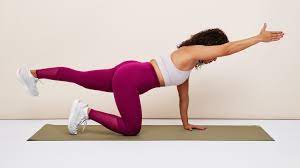
Bicycle crunch
The variation on the regular crunch works the obliques, rectus abdominous, as well as hips.
To embark with the back on the ground, with the left knee bent as well as drawn toward the chest. Keep the right leg straight as well as slightly lifted off the floor. Place the hands behind the neck or a lower part of the head, be careful not to pull on the neck while you do the move.
With the left knee bent as well as the right leg straight, lift the right shoulder off the ground & move the right elbow toward the left knee.
As the patient brings the right shoulder back to the ground, extend the left leg while bending the right knee & bringing it toward the chest.
As the right knee moves farther in, lift the left shoulder off the ground & move the left elbow toward the right knee.
Start with three sets of ten alternate repetitions.
Plank
A plank is a full-body exercise that targets the core. This also strengthens the arms, shoulders, back, glutes, as well as legs.
Start on all fours, with the hands below the shoulders & the knees below the hips.
Straighten the legs behind the patient, keeping the feet hip-width apart. Tighten the core.
Hold for ten seconds.
Repeat three times.
To make the exercise easier, keep the knees on the ground, with the weight over the hands. Keep a straight line from the knees to the shoulders.

Warrior crunch
The crunch variation works the core & lower body, including the thighs, glutes, and quads as well.
Stand with the feet slightly wider than shoulder width & the toes turned outward. Put the hands behind the head & open the chest.
Tighten the core as well as glutes. Bend the knees until the thighs are parallel to the ground.
Bend the torso to the side, moving the right elbow toward the right thigh. Repeat on the left side.
Start with one set of ten repetitions. Take a pause.
Repeat with the left leg & right arm.
Start with one set of ten repetitions.
A bird dog engages both the abdominal & back muscles, so it is an ideal core-strengthening move. This also challenges coordination, balance, as well as stability.
Bird dog with an elbow to knee
The variation on the basic bird dog incorporates fluid motion to engage the abs as well as back while improving the core mobility.
Start on all fours, hands below the shoulders & knees below the hips.
Tighten the core. Lift & straighten the right leg to hip level. Simultaneously lift & extend the left arm to shoulder level, palm down.
Bring the right knee & left elbow toward each other. Return to the embarking position.
Start with one set of ten repetitions.
Repeat on the other side as well.
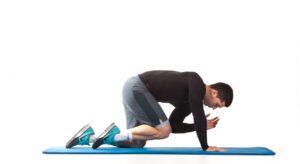
Mountain climber
The intermediate exercise combines the plank with knee motions, so it is an excellent move for balance as well as core strength.
Embark on the plank with the hands below the shoulders. Tighten the core.
Lift the right knee toward the chest, keeping the back straight and hips down as well.
Return the right leg to the beginning position as the patient simultaneously lift the left knee toward the chest.
Continue alternating legs. Start with one set of ten repetitions.
Side plank with rotation
The exercise is an advanced version of a basic plank. This strengthens the arms, shoulders, as well as obliques by combining the side plank with arm motions.
Lie on the right side with the right forearm below the shoulder. Extend the legs, left foot on top of a right. Tighten the core.
Lift the hips to form a straight line with the body. Raise the left arm straight up.
Rotate the torso toward the ground & bring the left arm under the body.
Rotate the torso again to straighten the left arm to come back to the beginning position.
Start with one set of ten repetitions. Repeat on the other side as well.
Turkish get-up
The full-body motion is a great way to increase spinal stabilization, & improve mobility in the hips, lumbar spine, as well as thoracic spine. It is also great for increasing strength in the ab muscles around the spine, & the shoulders.
Try this motion once or twice without the weight, & then start with something light (think 5 pounds) to make sure the shoulders are stable enough to handle weight overhead. Use a heavier weight as the patient build strength.
Lie on the back with the legs straight out & arms at the sides at about a 45-degree angle.
Bend the right leg & place the right foot on the ground, a few inches from the butt.
Bring the right arm straight up toward the roof, making the fist with the right hand & keeping the knuckles pointing toward the roof (this helps with shoulder stabilization).
Focus the gaze on the fist, this is where the weight will eventually be. The patient wants to keep the fist directly above the shoulder throughout an entire move.
Next, push through the right heel and the left elbow to prop yourself up onto the left elbow, making sure the chest is facing out in front of you, not up toward the sky.
Then, push the left palm into the ground & pull the body into the seated position, allowing the abs to do most of the work.
After that, slide the left leg underneath you, making sure the left knee, as well as left ankle, are in line with the left hand.
Move into the kneeling position with the left knee as well as the right foot on the floor, removing the left hand from the ground as the patient does so.
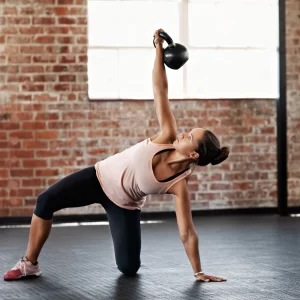
V-UPS
MUSCLES WORKED: Rectus abdominis, transverse abdominis, internal as well as external obliques, as well as hip flexors.
Exercise difficulty:
The exercise is for advanced athletes. Beginners, as well as intermediate athletes, may try normal crunches instead.
Sets and repetitions:
Perform ten repetitions. Rest for twenty seconds between sets. Work up to three sets
How to do this core exercise:
Lie on the back with the arms above the head
Legs remain straight with feet together or as close together as possible.
At the same time, role shoulders off the floor to “crunch” the stomach, & lift the legs off the floor. Try to keep them mostly straight.
From the “V” with the body where the hands & legs come together to touch.
Come back to the embarking position slowly.
Form tips as well as cues:
Keep the core engaged throughout a movement.
Chin stays tucked as well as keeps legs almost straight.
Breathe out on a way up, and in on the way down.
Leg raises
Muscles worked: Transverse abdominis, Rectus abdominis, Hip flexors as well as Obliques.
Exercise difficulty:
The exercise is suitable for beginner as well as intermediate athletes.
Sets as well as repetitions:
20 repetitions per set. Recover for ten seconds in between sets. Work up to three sets
How to do the core exercise:
Lying flat on the back, start with the legs in the air (90 degrees) as well as feet together. Arms stay flat by the sides. Keep chin tucked in and core engaged as well as strong. Keep back flat on the floor. The patient should not be able to place the hand under the back.
Slowly lower the legs to just above the ground. Return to the embarking position.
Form tips as well as cues:
Lower the legs as low as possible without arching the back. Keep tummy tight throughout, such as bracing for the punch.
If additional support is needed, put the hands facing down underneath the buttocks. Breathe in on the way down, as well as breathe out on the way up.
Common exercise mistakes:
Loosening the core. Not breathing. Rolling the head back instead of keeping it tucked in.
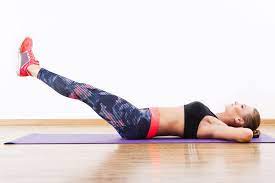
Low plank jack taps
Muscles worked:
Core muscles (Transverse abdominis, rectus abdominis, as well as internal/external obliques). Anterior Deltoids (Shoulders). Pectoralis Muscles (Chest) and Glutes, quads, hamstrings, calves.
Exercise difficulty:
The exercise is a bit tougher than some of the others. This is suitable for intermediate athletes, as well as something beginner athletes should work towards being able to do.
Sets as well as repetitions:
Thirty total. Rest for 20 seconds between sets. Three sets.
How to do this exercise:
Do the exercise like low plank plus:
Pick up the left leg as well as move it to the left side. Return the left leg to the center. Repeat the same movement with the right leg.
Form tips and cues:
Try not to rock the hips as this means a core is disengaging. Keep spine neutral as well as core engaged throughout. Focus on breathing throughout. Squeeze arms, quads, glutes as well as core together.
Common exercise mistakes:
Performing the motion too fast as well as losing form. Not breathing. Rocking the hips as well as losing core engagement
High plank walk
Muscles worked:
High Plank Walk works the same muscles as the High Plank. Moreover, this also works the shoulders, chest as well as arms. This is a great exercise that works the whole body.
Exercise difficulty:
The exercise is excellent for intermediate athletes. Beginner athletes should work the way up to the exercise.
Sets as well as repetitions:
Perform a “walking” movement for 40 seconds.
Rest for twenty seconds before embarking on the next set. Work up to three sets.
How to perform this exercise:
Setup in the High Plank position. Keep hips as well as core tight. Try not to use rocking or even momentum to move.
Move the left hand (and foot) out to the left side (approximately half of the shoulder’s width away), & bring the right hand (and foot) with it so as the distance between the two hands is the same as the starting position.
Repeat the twice to a left, followed by twice to a right.
Always keep the core tight, butt tucked under, shoulder blades strong (as if pushing a ground away).
Form tips and cues:
Pull shoulders down away from ears. Keep hips “stuck” & not rocking. Take the proper time.
Always think: “suck belly button in to meet spine” to keep the core engaged.
Common exercise mistakes:
Too rushed as well as “messy.” It means the core is not engaged.
Butt sticking out, meaning a core is not engaged.
Starfish crunch
Muscles worked: Rectus abdominus, Transverse abdominus, Internal as well as external obliques, and Hip flexors.
Exercise difficulty
The exercise is suitable for intermediate athletes. This is also a motion that beginners should work towards being able to complete as they progress.
Sets as well as repetitions:
30 total repetitions. 20-second rest. Three sets.
How to perform this core exercise:
Lie flat on the back in the “X” shape. Leading with the right arm, roll the upper back off the ground into the cross-body crunch motion
While leaning up, bring the left leg straight up (keeping it mostly straight), & reach the right hand to meet the left ankle. Return to embarking. Repeat on the opposite side as well.
Form tips and cues:
Keep chin tucked safely so as to not strain the neck. Keep core tight at all times, even when lying flat in the “X” shape.
Focus on the cross-body crunch feeling & do not rush the movement or else momentum will take over. Try to keep your legs as straight as possible.
Common exercise mistakes:
Using momentum. Not breathing. Bending legs

Windshield wipes
Muscle worked:
Rectus abdominis, Internal and external obliques, Erector spinae as well as Hip flexors.
Exercise difficulty:
The exercise is for advanced athletes only. Beginner, as well as intermediate athletes, should work their way up to being able to do Windshield Wipers correctly. Take care if this is the first time trying the movement.
Sets as well as repetitions:
Ten repetitions per side. Rest for twenty seconds between sets. Perform up to three sets.
How to perform this core exercise:
Lie flat on the back with arms out by the sides at a 90-degree angle to the body.
Lift the legs straight up in the air, also at a 90-degree angle at the hip joint.
Ensure the back is flat against the ground. Tuck butt in by bringing the hip bones as well as rib cage close together. Squeeze the belly button towards the back of the spine.
Keeping the arms on the floor as well as legs straight, slowly bring both legs down to the right side so the body forms the “L” shape.
Return to the center as well as repeat on the other side, as if the patient is windshield wipers on the car.
Form tips as well as cues:
Keep the core engaged throughout.
Try to think “slow on the way down, faster on a way back up.” Do not go too fast or else momentum takes over.
Breathe in on a way down, & breathe out on a way back to the center.
Common exercise mistakes:
Performing this exercise too fast.
Very much rocking as well as uses momentum.
Disengaging the core.
As the patient continues to hold the right arm overhead, press the right foot into the floor as well as bring the left leg forward such as the patient is doing the lunge. The patient should now be standing.
Now, do the motions in reverse until the back is on the floor again.
Start with three to five repetitions.
Weighted Crunch
Crunches are fairly easy to do properly. But in the exercise, adding resistance as well as weight makes them more challenging.
Equipment needed: High cable pulley machine, rope attachment, as well as the stability ball.
Muscles worked: Abdominals, hips, as well as glutes.
Attach the rope to the high cable pulley machine. Lower a cable down to the last notch. Select the appropriate amount of weight as well as hold onto a rope with both palms above the knots in the neutral grip. Keep the palms facing in toward each other.
Have the seat on the stability ball & take two steps out so the back is supported on a ball. The glutes, hips, as well as knees, should form a straight line. The elbows should be slightly bent & kept in this position with a strong hold on a rope. It is the starting position.
Exhale, contract the abs, & crunch up on a ball using the core muscles only. The crunch should only be the 30-degree motion (think ribs into hips). Do not do the full setup, the smaller the movement, the more effective the exercise will be. The arms should not be yanking on the rope. Instead, it should only be applying the weighted resistance to the core. Hold the contracted position for one count.
Inhale in a slow, controlled manner, lean back to the beginning position, releasing slight tension on a cable.
Do fifteen to twenty repetitions for 3 to 4 sets.
Wood Chop
It is probably not a wood chop the patient is thinking of. There is no need to bring an ax to a gym.
Equipment needed: High cable pulley machine as well as rope attachment
Muscles worked: Obliques, shoulders, as well as triceps.
Attach the rope to a high cable pulley machine & select the appropriate amount of weight. Lower a cable down to the last notch, as well as hold the rope in the neutral grip with the thumbs pointing up toward you. Stand in the shoulder-width stance with the knees slightly bent as well as the core engaged. It is the beginning position.
Exhale as well as twist the torso as the patient pulls the rope up to the right in a diagonal motion. Do it until the arms are fully extended. Try to get the tricep in line with the ears. Only the arms, eyes, as well as obliques, should move. Keep the hips, knees, as well as feet planted & facing forward. If the patient feels pressure in the knee opposite from the direction the patient is twisting, roll the foot up onto the toes. Watch as the patient is pulling a rope up to the right. Wherever the eyes go, the body will follow.
Inhale as well as slowly release the tension in the rope. Come back down to the embarking position with a rope centered in front of you.
Exhale & this time, twist a rope up to the left side. It is 1 rep.
Perform a total of twenty repetitions, ten on each side. Work up to 3 to 4 sets.
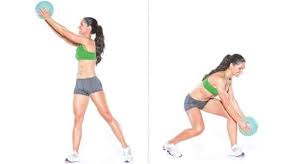
Side Plank Into Rear Delt Fly
Switch up the old static side plank with a little resistance. Its moves will really challenge the core’s stability.
Equipment used: High cable pulley machine as well as single handle attachment.
Muscles worked: Middle back, shoulders, obliques, as well as triceps
Attach a single handle to a high cable pulley machine & select the appropriate amount of weight. Come down to the ground about 2 to 3 feet away from a cable pulley machine & into the side plank position.
Note: Only the right elbow, as well as the right foot, should be touching the floor. The right elbow & shoulder should be in 1 line, & the left foot should be directly on top of the right foot, all supporting the body weight. The feet, hips, as well as head, should form a diagonal line. The patient wants the cable to be directly in line with the left shoulder while you’re planking, so adjust the height of a cable accordingly for the height.
Grab the handle with the left hand in the neutral grip position (palm facing the floor). It is the starting position.
Exhale, squeeze the core, & swing the left palm as well as arm up toward the roof performing the rear delt fly. Keep the wrist straight at all times, but the patient may keep a slight bend in the left elbow if the patient needs. End the fly when both of the shoulders are in one line & the body forms a “T” position. As you reach this “T” position, retract the shoulder blades down & back. Hold it for one count.
Inhale. Lower the left arm back down to the embarking position, releasing some tension in a cable.
Perform ten repetitions, & then repeat this exercise on the left side with a cable in the right hand. Work up to 3 to 4 sets.
Russian Twist on Stability Ball
Russian twists are pretty hard to do without adding the stability ball to a mix. But it gives the core the extra challenge.
Equipment needed: High cable pulley machine, single handle attachment, as well as a stability ball.
Muscles worked: Shoulders, triceps, obliques, and glutes as well.
Attach a single handle to a cable pulley machine. Lower a cable down to about a middle notch. Place a stability ball about 3 feet away and lie on the back of a ball perpendicular to the machine. The patient wants the shoulder blades, upper back, as well as neck supported on a ball. The glutes as well as hips will be hanging off, so it is important to squeeze the glutes into the high bridge so the patient can support the lower back.
Grasp a handle with one hand over another & pull a handle toward the face so it lines up in the middle of the chest. Engage the core & lock out the arms above you, still keeping a handle in line with the chest. The feet should be shoulder-width apart or a little wider for a strong stance. The knees should form a 90-degree angle. It is the beginning position.
Exhale. Rotate the torso away from a pulley machine toward the left side for the full-quarter rotation (think 9 o’clock), & keep the arms fully extended. Only the arms, obliques, as well as eyes, should be moving during the exercise. Hold the position for 1 count. Make sure the hips stay stationary & the glutes are still squeezed into the high bridge, even when the patient rotates.
Inhale, & in a slow, controlled manner, twist the torso as well as arms back to the embarking position.
Do 15 repetitions, then reposition yourself & perform the twist on the right side for 3 to 4 sets.
Reverse crunch
The exercise increases the strength in the low abdominal area, assisting focus on one area if the patient wants a more targeted exercise.
Lie on the back with the knees bent to the chest. Lower the feet down to the floor slowly, and try to keep the feet elevated slightly off the ground before bringing the knees back up to the chest.
Single-Arm Press
Stand with feet hip-width apart & hold the dumbbell in your left hand.
Extend the right arm out to the side at a 45-degree angle from the body while the patient racks a dumbbell on the right shoulder. It is an embarking position.
Brace the core & begin to raise the weight overhead, keeping the bicep close to the ear & palm facing toward the patient side.
Return to the embarking position. It is one repetition. Continue for 10 repetitions on each side.
Deadbug
Lie on the back with the arms extended over the chest & legs bent 90 degrees (knees above hips).
Keep the low back pressed to the ground, brace the core, then slowly & simultaneously extend as well as lower the right leg until the heel nearly touches the floor & the left arm until the hand nearly touches the floor overhead.
Pause, then come back to the starting & repeat with an opposite leg as well as arm. It is one rep. Complete 10 repetitions.
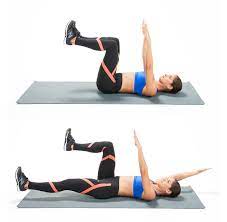
Glute Bridge March
Lie on the back with the legs bent, heels under knees, feet flat on the ground.
Extend the arms over the chest, palms facing. Raise the hips so the body forms a straight line from the shoulders to the knees.
Brace the abs and lift the right knee over the hip, maintaining the 90-degree angle of that leg.
Hold for the moment, then lower the right foot. Repeat with a left. It is one repetition. Complete 12 repetitions.
Inchworm
Stand with the feet hip-width apart. Slowly bend over & touch the ground in front of the feet with both hands.
Keeping the legs as straight as possible & core tight, walk the hands forward, without letting the hips drop, until the patient reaches the high plank position.
Pause, then slowly walk the feet toward the hands. It is one repetition. Complete 10 repetitions.
Bear Crawl
Embark in tabletop position at the back of the mat with the wrists under the shoulders, knees under hips, & the neck aligned with the spine.
Keep the slight bend in the elbows. Raise the hips slightly to lift the knees off the floor while maintaining a flat back.
Slowly walk the hands & feet forward to the top of the mat, then reverse the motion. It is one repetition. Complete 10 repetitions.
Kettlebell Bridge Pullover
Lie on the back with the knees bent as well as the feet flat on the ground. Hold the kettlebell in both hands, resting on top of the chest.
Raise the hips so the body forms a straight line from the shoulders to the knees.
Lift the kettlebell into the air over the chest, then slowly lower it behind you till it nearly touches the floor without arching the back or splaying the rib cage.
Engage the core as well as return a kettlebell over the chest. It is one rep. Complete ten repetitions.

Stability Ball Deadbug
Lie on the back with the legs bent at 90 degrees & arms extended over the chest holding the stability ball between the forearms as well as knees.
Press low back into a mat, brace the core, then slowly & simultaneously extend as well as lower the right leg until the heel nearly touches the ground and the left arm overhead until the hand nearly touches the ground behind you.
Pause, then come back both knees as well as a forearm to the stability ball & repeat on the opposite side. It is one repetition. Complete 10 repetitions per session. Do three sessions per day.
L-Twists
Embark in the supine position on the floor, with knees as well as hips bent at 90°, arms out to sides, palms up.
Activate the core & slowly rotate the knees towards the floor, keeping a 90° angle at the hips & knees as well as keeping the upper body in contact with the floor.
Keeping shoulders stable, rotate as far as comfortable & use obliques to return to the beginning position.
Repeat another side as well.
Seated Knee Tucks
While seated on the mat, extend the legs fully straight out in front & lean backward keeping the spine neutral (tip: do not round the back). After that, with the legs extended, start to bend the legs, bringing the knees towards the chest. With the knees bent, hold the position for a second or two, next extend the legs outwards & return to the embarking position without touching a mat. Repeat ten times per session. Do three sessions per day.
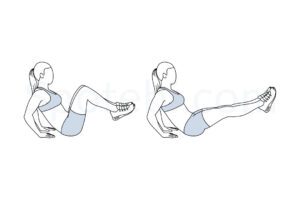
Circle Plank
It is an advanced variation of a plank. Starting with the arms straight in plank position, bring in the right knee & draw the circle with it clockwise, after that anti-clockwise. Continue alternating ten times then switch legs. Do three sessions per day.
Sliding Pike
The patient will need a towel to do this exercise. Embarking with the body in the plank position & the feet on the folded towel (to help you slide easier), beginning to draw the legs in, raising the hips towards the sky. Hold for a second after that repeat. Do three sessions per day.

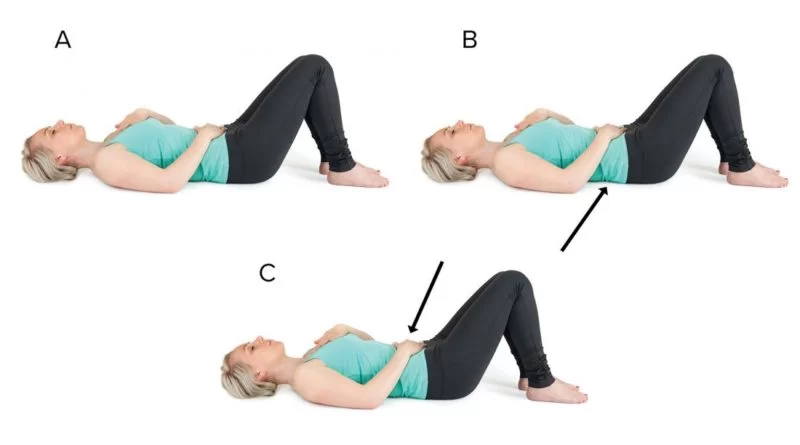
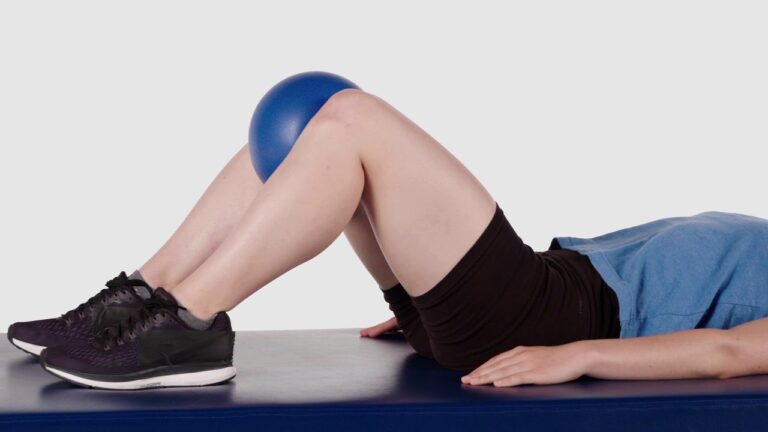
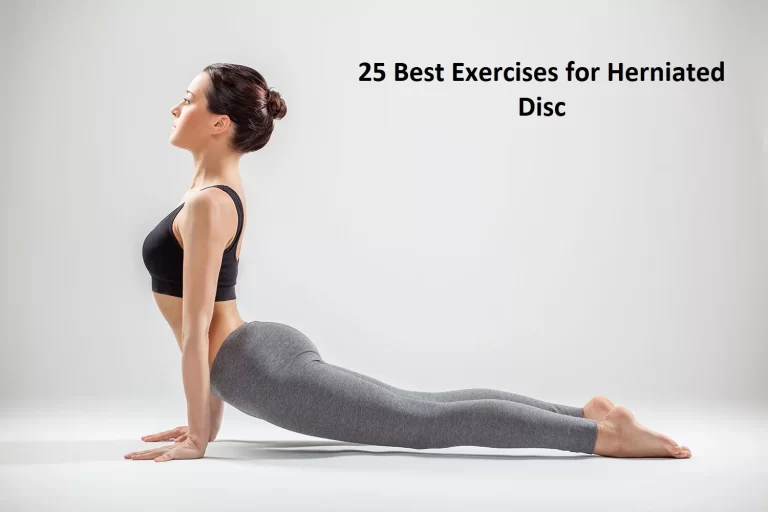
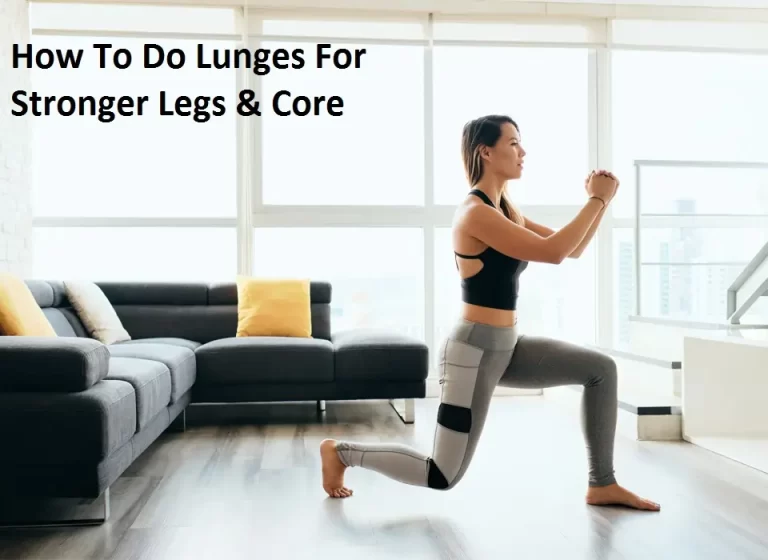
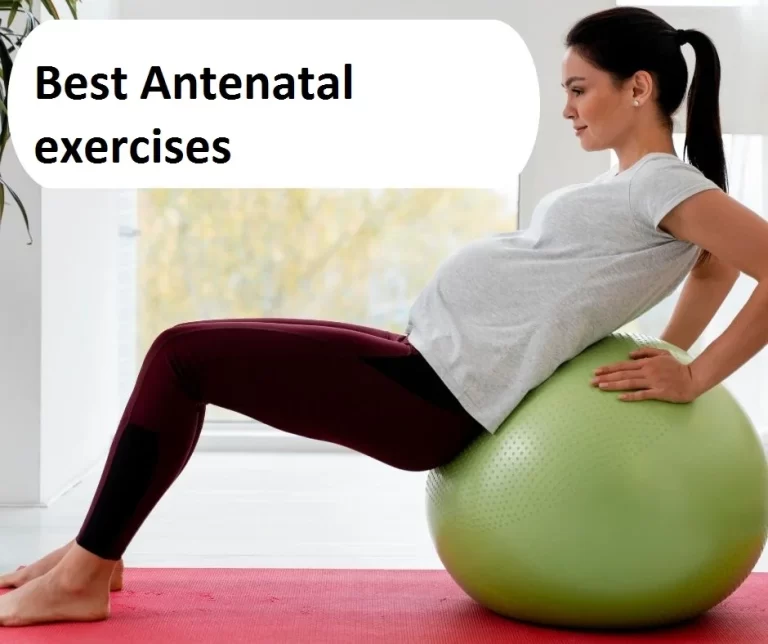
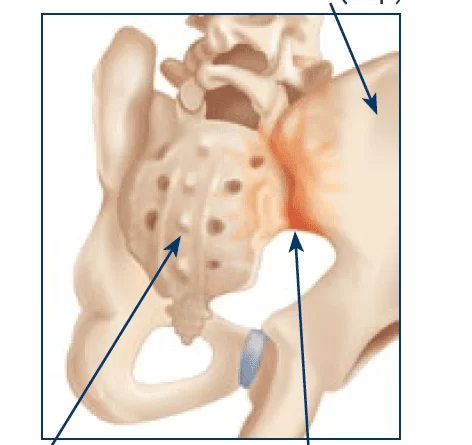
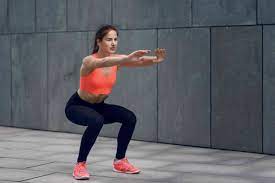
3 Comments